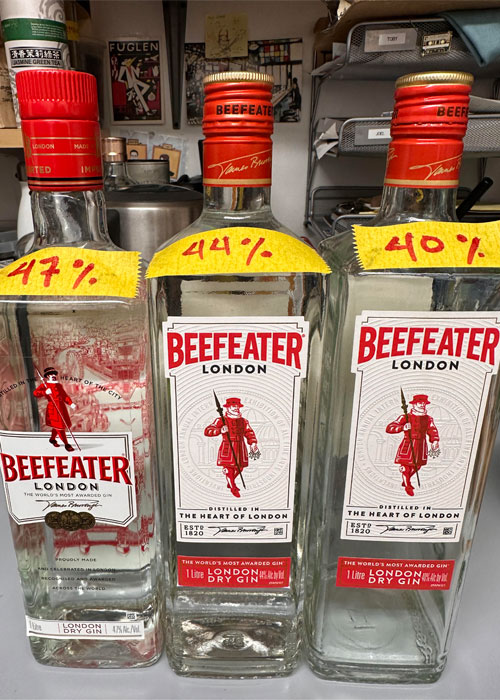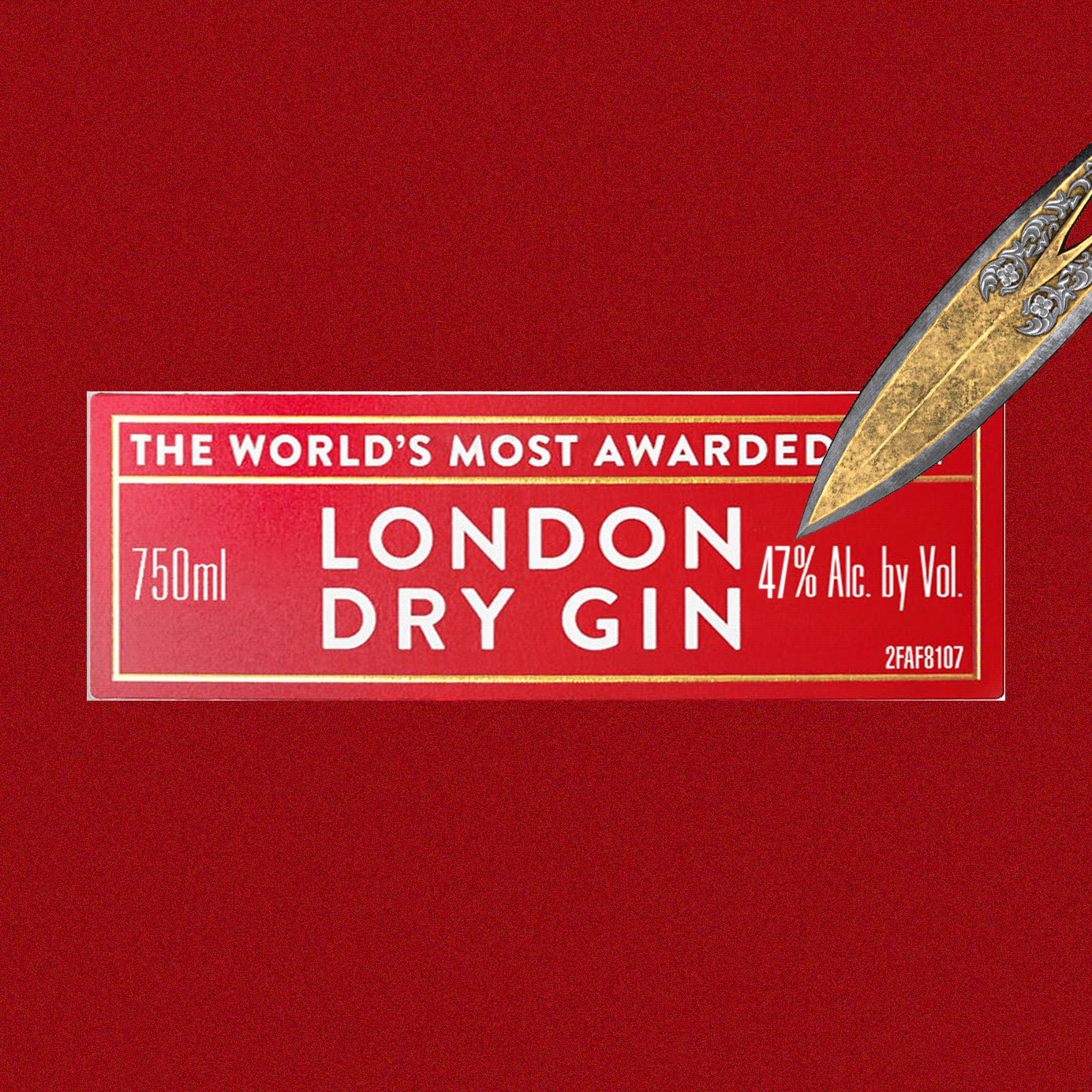One day recently, Toby Cecchini received a text message from a spirits industry friend of his. It was a photo of a bottle of Beefeater Gin sitting on a shelf at a Maryland liquor store, showing an ABV of 40 percent.
“I was gobsmacked,” says Cecchini, co-owner of Brooklyn’s Long Island Bar. He went down to his liquor storage room and looked at his Beefeater bottles. Older ones still showed a proof of 44 percent ABV, while a case of newer ones indeed listed 40 percent.
“They’d done it again! Unbelievable!” he told himself. “The cynical cheek of these people. How is this not being decried industrywide?”
Indeed, without so much as a press release, Beefeater has quietly — some might say sneakily — lowered the proof of its flagship gin in the U.S. from 44 percent to 40 percent ABV, the legal minimum for any spirit sold in the country. This would perhaps not be the biggest deal in the world, except for the fact that just three years earlier, in late 2020, Beefeater changed its packaging and lowered the proof of its London Dry from 47 percent to 44 percent ABV. Despite seemingly doing this under the diversion of a pandemic, that change immediately elicited a lot of anger among cocktail enthusiasts and industry pros, as these changes always do.
“It had been a marvelous gin at 47 percent. Maybe it was still a great gin at 44 percent but I just found the sneaky way they did it, under the cover of the pandemic shutdown, to be cynical and despicable.”
“Beefeater is dead to me,” wrote a user on r/cocktails. Others agreed, offering recommendations for higher-proof alternatives, including Bombay Sapphire, Tanqueray, and Broker’s Gin 94°. Many speculated that this was a cynical ploy by Beefeater’s parent company, Pernod Ricard, to eke a few more cents out of each bottle by reducing import taxes and production costs. The company, of course, insisted otherwise.
“The intention of the ABV change is to provide a more consistent brand experience globally for our consumers,” wrote the brand in a Tweet that has since been deleted. In fact, Beefeater has long been proofed to 40 percent ABV in most non-U.S. locations, the proof that the brand has now ultimately settled on in America.
(Request for comments from Pernod Ricard remain unanswered at the time of publishing.)
You might wonder what the big fuss is? Gin is predominantly used in cocktails and, therefore, can any one really tell the difference between 47 percent 44 percent or 40 percent in a Martini, Gimlet, or Gin & Tonic?
People like Cecchini insist they can.
“It had been a marvelous gin at 47 percent. Maybe it was still a great gin at 44 percent but I just found the sneaky way they did it, under the cover of the pandemic shutdown, to be cynical and despicable,” Cecchini says. He stopped carrying it at his bars in protest.

Beefeater is hardly the first brand to face backlash after lowering the proof of a flagship product, though these kerfuffles often concern aged sipping spirits. Famously, back in 2013, Maker’s Mark lowered its proof from 90 to 84. The distillery claimed it made the decision to stretch a then thin supply. However, the reaction among the general public was so vicious that within two weeks the bourbon brand had decided to go back to the original 90 proof. Crisis (somewhat) averted.
Then there’s Jack Daniel’s, which, in the late 1980s, lowered its proof from 90 to 86, then again in 2002 dropped it all the way down to that magical minimum of 40 percent ABV. It hardly seemed to affect the brand, which remains the best-selling whiskey in America. If anything, it perhaps allowed Jack to leave its flagship bottling for the hoi polloi while experimenting with higher-proof, more complex offerings for connoisseurs via its 100-proof Bonded Series.
Indeed, Beefeater might be on a somewhat similar track, perhaps trying to increase awareness and sales of its relatively unknown 90-proof Beefeater 24. If recent TTB COLA filings are to be believed, the product looks set for an imminent packaging revamp, which seems to confirm this thinking. (Meanwhile, Pernod Ricard also has the revered Monkey 47 — bottled at 47 percent ABV— in its company portfolio.)
But for people like Cecchini, this is yet another case of corporate suits mucking up yet another legendary product for myopic money-making reasons, although he has started carrying bottles at Long Island Bar again.
“As far as I’m concerned,” he says, “I’ll keep a bottle around for rubes who insist on it, but I will tell customers I’m dealing with directly who order it: ‘I would go with something else, personally; they’ve cheapened the product, twice recently, and it’s not at all the same gin. Get something real.’”
